Expert panelists discuss the possibilities and challenges of kelp farming in addressing food security, climate change and socioeconomic issues
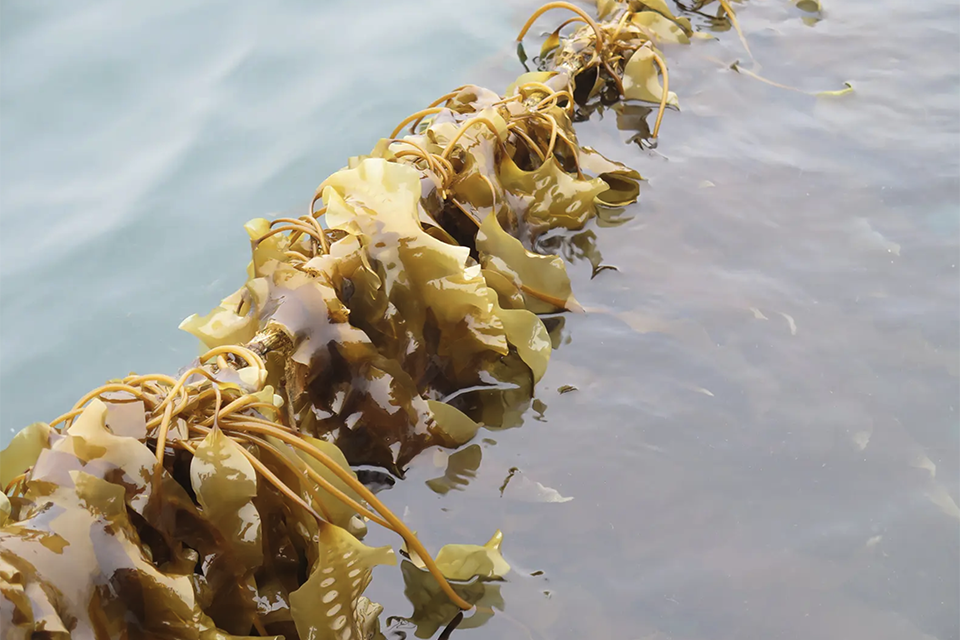
Global interest in kelp farming has surged in recent years, with a growing number of advocates hailing it as a panacea for environmental and socioeconomic woes. Many kelp farmers and seaweed champions make bold claims about how the industry can address a range of global challenges: from remedying food security issues to mitigating climate change to bringing jobs to coastal communities.
However, the evidence to support such claims is fairly thin and many knowledge gaps exist. The question remains: Can kelp truly deliver on these promises?
This was the topic of discussion at “Kelp Farming: Promises, Pitfalls and What We Still Don’t Know” – a recent webinar hosted by Hakai magazine and the Ocean Decade Collaborative Center for the Northeast Pacific. Featuring three expert panelists, the event delved into the debate surrounding kelp farming and explored challenges and unanswered questions about this emerging industry.
‘Scratching the surface’ of seaweed’s potential
There’s no doubt that seaweed is a rising star in the blue foods economy. According to recent market research, the seaweed cultivation market is projected to rise at a compound annual growth rate of 7.8 percent by the end of 2032. The uptick is partly fueled by consumer demand, as more people shift toward plant-based diets, but also as a nature-based solution to climate change. But the panelists cautioned against getting overly optimistic about its potential.
“We know that kelp can do all these fantastic things – carbon capture and nutrient uptake as a part of their kind of basic metabolic activities,” said panelist Jennifer Clark, a phycologist and the chief science officer at Cascadia Seaweed, the largest kelp cultivator in Canada. “Everybody wants kelp to be this silver bullet that’s going to feed the world and solve climate change. But we still need to learn more about permanent carbon sequestration, and we probably can’t uptake everything that we want to take out of the oceans.”
As Clark emphasized, the kelp aquaculture sector is not currently in the position to produce the amount of kelp needed to reduce nutrients from the ocean. However, in British Columbia, she is seeing some emerging research related to using kelp as a temporary habitat for migrating fish.
“A researcher, Dr. Colin Bates, is looking at kelp farms as a potential refuge for migrating salmon and forage fish,” said Clark. “Those data are very informative to see whether kelp farms can provide at least a temporary shelter for fisheries and other forage fish.”
Dr. Nichole Price, a marine ecologist at Bigelow Laboratory for Ocean Sciences in Maine, has been researching kelp aquaculture since 2014, initially starting with climate mitigation.
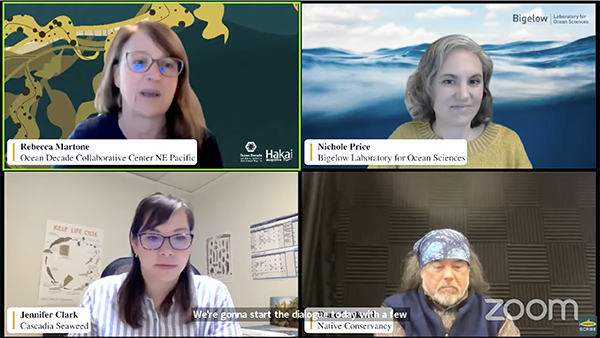
“We’ve had some exciting results looking at farming kelp and mussels together,” said Price, who was a panelist on the webinar. “But that turned into questions about what’s happening to that CO2 that the kelp is absorbing. Where does it go and what does that mean for global warming?”
It led to a collaborative research initiative, which involved taking sediment core samples from beneath 22 kelp farms worldwide. The goal was to study the deposition rate of flaked-off seaweed bits, with the hope that sunken seaweed would become incorporated into the sediment and permanently removed from the global carbon cycle.
“There is evidence of potential carbon deposition and sequestration underneath certain kelp farms,” said Price. “But the certainty of whether or not that carbon is getting sequestered depends on lots of factors, like the size and the age of the farm, how much kelp is being grown, whether or not the exposure or circulation patterns around that farm end up removing the fixed CO2 and tissues and placing it elsewhere or storing it there. So we are just really scratching the surface of being able to understand the carbon sequestration processes that can happen from a natural kelp farm growing cycle.”
According to Price, the impact of dumping large amounts of seaweed on the seafloor is currently unknown, leading to concerns about using kelp for carbon sequestration.
“There are small experiments that are starting to happen at Bigelow, and I’m aware of some happening elsewhere in the world to try to fill those knowledge gaps,” she said.
While questions linger about sinking seaweed, Price thinks “more critically” about how kelp products could serve farmers in various markets while simultaneously contributing to climate mitigation. For instance, feeding seaweed to livestock can help suppress methane burps generated by the animals; exploring kelp as a biofuel; and advancing research on the possibility of producing bioplastics and building materials from kelp while leading to carbon sequestration.
“In the end, what is really needed – which is a major gap – is some very robust lifecycle assessments that compare the various pathways for the kelp product and how it’s best used to help address climate change scenarios,” said Price.
‘We’re trying to navigate how to be sustainable’
Although touted as a benevolent industry, seaweed farming is not immune to facing ethical, environmental and social justice dilemmas. As the industry expands, concerns about infringing on Indigenous sovereignty arise. Panelist Dune Lankard, an Eyak Athabaskan fisher, activist, and founding president of Native Conservancy, is currently involved with a “Kelp Now” listening tour to solicit feedback on mariculture from Indigenous peoples across Alaska.
“They were concerned about mariculture coming to a shoreline near them soon,” said Lankard. “What we’re witnessing is an actual modern-day land claim on the ocean. It’s about ocean rights, water rights, self-determination and sovereignty. So I feel that Indigenous peoples should organize.”
Lankard is spearheading an Indigenous kelp cooperative along with an alliance to help advance the involvement of Indigenous communities in kelp farming. By working as a collective, he strives to “put our minds together” to collaboratively overcome hurdles, like figuring out funding and permitting.
“Processors, canneries, big kelp corporations – or even the fishermen for that matter – are all going to get their share, but I can tell you right now, the Indigenous peoples are not,” said Lankard. “So that’s why I’m helping to organize them to give them the opportunity to be a part of this rapidly growing industry.”
We have to change our relationship with the ocean and our food source because we’re running out of time.
The lack of regulation for kelp aquaculture was also highlighted as a key challenge, especially in terms of risk management. For instance, Clark said that kelp farmers in B.C. currently fall under the regulations for shellfish aquaculture.
“We take a cautious approach to producing kelp without a lot of regulations in B.C. and we have actually [modeled it after] Alaska,” said Clark. “For instance, we only take parent stock from 50 kilometers [30 miles] around our farms. So we’re trying to navigate how to be sustainable and environmentally conscious when growing kelp in the ocean without regulations.”
There’s also a knowledge gap on selective breeding of kelp – an agricultural technique used to identify kelp with naturally higher tolerance to harsh growing conditions. While Price cited a successful research program in South Korea to selectively breed more thermally tolerant kelp, these techniques are generally not accepted by most policymakers as of yet. That leaves the industry guessing at best practices.
“There are two ways to make this a conservative approach: one is to use very localized populations so that you’re not introducing any new genetic material to that population,” said Price. “And two, harvest the seaweed before it becomes reproductive or generate non-fertile individuals through selective breeding to [avoid] reproducing and putting genetic material back into the population.”
‘The world needs a plan’
In the final segment of the webinar, the discussion turned to how (or whether) the seaweed industry could participate in the carbon credit system. Going forward, Price emphasized the need to implement tools and procedures to verify the carbon sequestration process of kelp farms.
“There are methodologies developed specifically for kelp farmers to be able to access carbon credits,” said Price. “But we [want to avoid] greenwashing territory, where there are opportunities to claim carbon offsets and value without any oversight. I just hope that people can educate themselves as to the difference between those two processes and target those that follow an evidence-based approach for sequestration.”
Thinking about the future of kelp farming, Lanark is more concerned about “a different kind of ROI” and the urgency to address the climate crisis.
“To me, it’s about healing, restoration, mitigation, conservation and survival as a human race,” said Lankard. “We have to change our relationship with the ocean and our food source because we’re running out of time. We have this opportunity to do something good for the ocean, but the world needs a plan. I don’t see that happening quick enough.”
Despite the challenges ahead, the panelists remain optimistic about where the kelp farming industry may eventually land. As Clark said, kelp aquaculture can provide “a lot of solutions,” and lead to a shift away from land-based foods.
“When we’re thinking about farming, kelp aquaculture provides probably the least amount of risk, in terms of not taking any more food, land or fresh waters, and not using any chemicals or fertilizers,” said Clark. “We have a great future and I want to see it flourish.”
Follow the Advocate on Twitter @GSA_Advocate
Now that you've reached the end of the article ...
… please consider supporting GSA’s mission to advance responsible seafood practices through education, advocacy and third-party assurances. The Advocate aims to document the evolution of responsible seafood practices and share the expansive knowledge of our vast network of contributors.
By becoming a Global Seafood Alliance member, you’re ensuring that all of the pre-competitive work we do through member benefits, resources and events can continue. Individual membership costs just $50 a year.
Not a GSA member? Join us.
Author
-
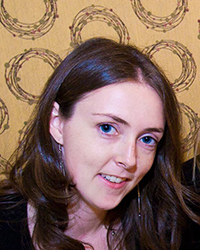
Lisa Jackson
Associate Editor Lisa Jackson is a writer who lives on the lands of the Anishinaabe and Haudenosaunee nations in Dish with One Spoon territory and covers a range of food and environmental issues. Her work has been featured in Al Jazeera News, The Globe & Mail and The Toronto Star.
Related Posts
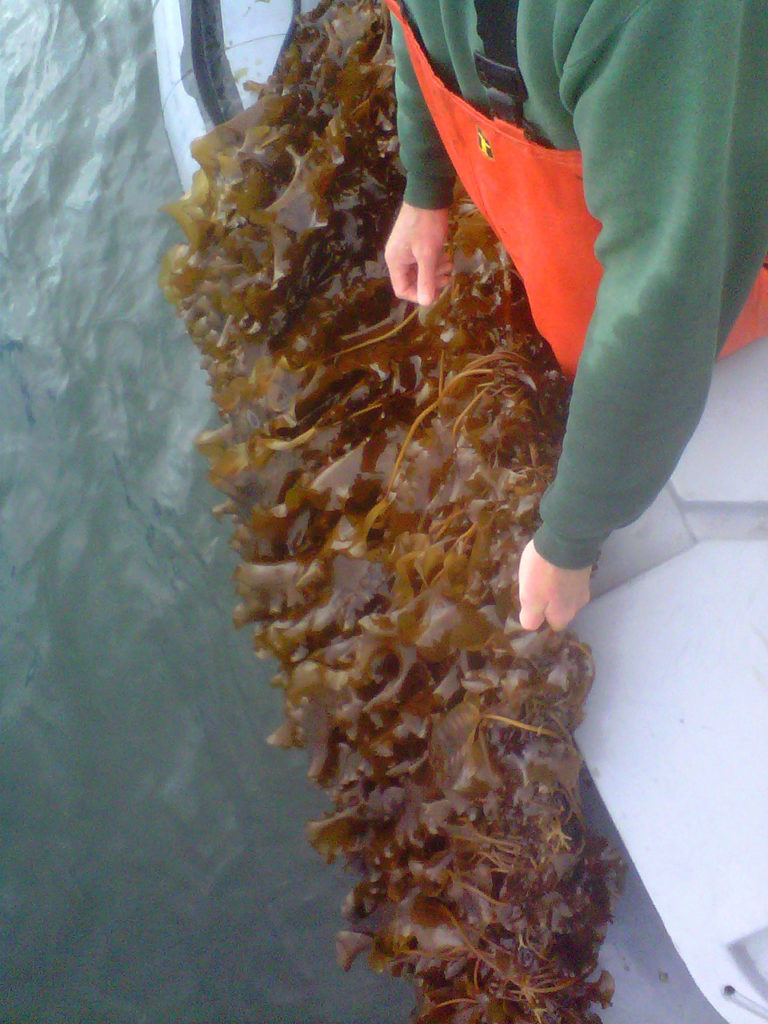
Responsibility
Seaweed farming offers avenue toward greater food security
Seaweed farming has both proven history and huge potential. Large-scale farms could produce raw materials for biofuel, aquatic feeds and human consumption.
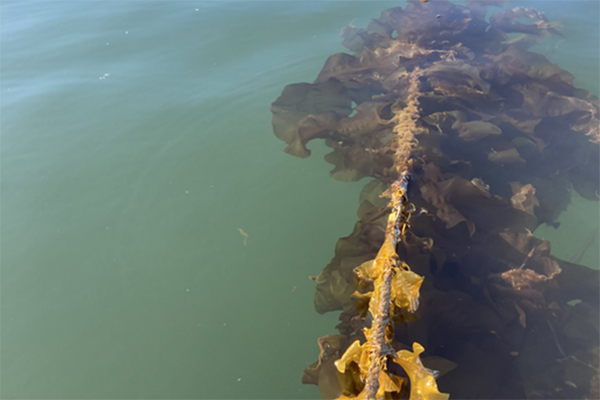
Responsibility
Kelp farms believed to help reduce coastal marine pollution
The water-filtering abilities of kelp farms could help reduce marine pollution in coastal areas, according to a new study.
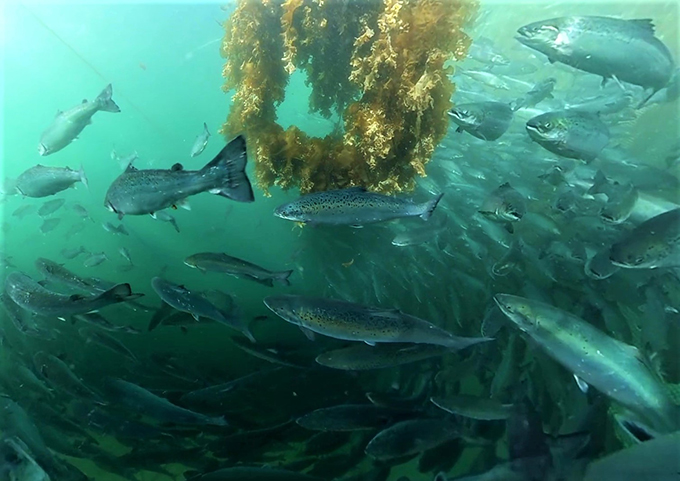
Responsibility
Could cultivating kelp forests in salmon pens help ‘future-proof’ the sector?
KelpRing has received funding to explore the possible benefits of installing kelp forests within salmon pens to benefit cleaner fish.
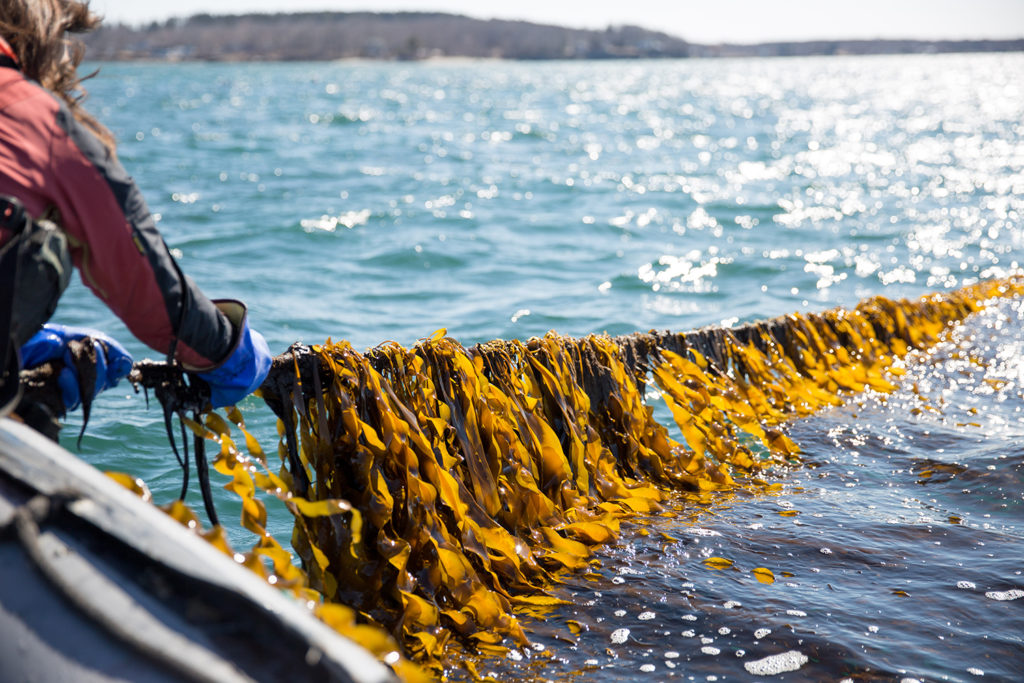
Intelligence
Kelp is the climate-friendly crop that could
Kelp aquaculture is poised for growth on both U.S. coasts, but one grower network in Maine is building a brand and demand for domestic seaweed.


